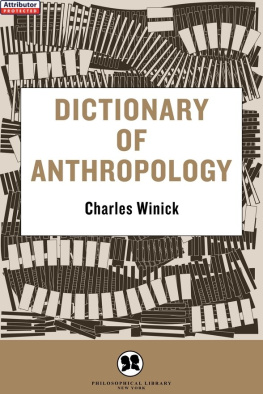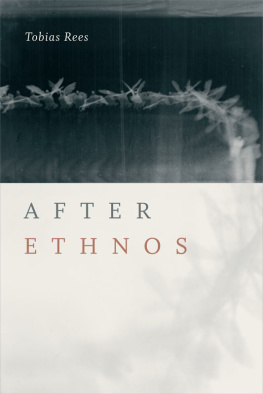Practicing Art and Anthropology
Practicing Art and Anthropology
A Transdisciplinary Journey
ANNA LAINE
First published 2018 by Bloomsbury Academic
Published 2020 by Routledge
2 Park Square, Milton Park, Abingdon, Oxon OX14 4RN
605 Third Avenue, New York, NY 10017
Routledge is an imprint of the Taylor & Francis Group, an informa business
Copyright Anna Laine, 2018
Anna Laine has asserted her right under the Copyright, Designs and Patents Act, 1988, to be identified as Author of this work.
For legal purposes the Acknowledgements on p. x constitute an extension of this copyright page.
Cover design: Adriana Brooso
Cover image Anna Laine
All rights reserved. No part of this book may be reprinted or reproduced or utilised in any form or by any electronic, mechanical, or other means, now known or hereafter invented, including photocopying and recording, or in any information storage or retrieval system, without permission in writing from the publishers.
Notice:
Product or corporate names may be trademarks or registered trademarks, and are used only for identification and explanation without intent to infringe.
A catalogue record for this book is available from the British Library.
Library of Congress Cataloging-in-Publication Data
Names: Laine, Anna-Kaisa, author.
Title: Practicing art and anthropology : a transdisciplinary journey/Anna Laine.
Description: London, UK ; New York, NY, USA : Bloomsbury Academic, 2018. |
Includes bibliographical references and index.
Identifiers: LCCN 2018001793 | ISBN 9781474282352 (hardback)
Subjects: LCSH: Art and anthropology. | Interdisciplinary research. | Kolam (House marks)
Classification: LCC N72.A56 L358 2018 | DDC 701/.03--dc23 LC record available at https://lccn.loc.gov/2018001793
Typeset by Refi neCatch Limited, Bungay, Suffolk
ISBN 13: 978-1-4742-8235-2 (hbk)
ISBN 13: 978-1-3501-4367-8 (pbk)
For Zofia
The author and publisher gratefully acknowledge the permission granted to reproduce the copyright material in this book.
The inclusion of material over which Anna Laine does not hold the copyright are in a few cases based on agreements made during fieldwork. Every effort has been made to trace the copyright holders to obtain their additional confirmation to use any previously unpublished material. The publisher apologizes for any errors or omissions in the above list and would be grateful if notified of any corrections that should be incorporated in future reprints or editions of this book.
I would like to thank all the beloved participants and collaborators in this book. Special gratitude is owed to those who welcomed me into their lives during fieldwork and who through their hospitality, patience and confidence allowed me to learn and grow. Immense appreciation is given to the people who generously engaged in my writing, particularly Chris Wright, Eva Rosn-Hockersmith, Hari Rajaledchumy, Maria Grts, Thera Mjaaland, Sabes Sugunasabesan and Kuladevy Elangovan. I am much obliged to all friends and colleagues who have supported me in various ways, and mostly to my daughter Zofia.
Working with art and anthropology: An introduction
Collaborations between artists and anthropologists have increased during the first two decades of the twenty-first century and continue to evoke considerable debate. Proponents and antagonists in the respective fields discuss a wide range of issues concerning methodology, theorization, representation and presentation. Arguments are constituted around viable epistemological forms and knowledge productions (Grimshaw and Ravetz 2015; Schneider and Wright 2006, 2009, 2013), sensual and material engagements in social relations (Ingold 2013; Svasek 2012; Wright 2013), ontological perspectives on images and objects (Gell 1998; Pinney and Thomas 2001; Latour 2005), theoretical and conceptual developments (Belting 2014; Sansi 2015; Ssorin-Chaikov 2013), and power imbalances between globally dispersed actors (Enwezor et al. 2012; Marcus and Myers 1995; Schneider 2006a, 2006b, 2012). Varying conventions regarding aesthetics and ethics have prompted the most edgy disputes, and they have postulated incompatibility and institutional purity as well as productive tensions with potentials for increased exchange.
This book is a contribution to the ongoing debate. It presents a particular kind of experience based on exploratory engagements within and across art, anthropology and art as research. This way of working has developed during practice-based learning within photography and fine art, followed by academic training in anthropology and subsequent experiments with joining the two, partly by way of the newly established field artistic research (expanded on p. 11f). Skills in how images, objects, sounds and installations affect us and transform what we know have guided my inquiries, and pointed at theoretical frameworks concerned with conceptualizations of the material, relational and sensory as well as implications of actual situations of making.
From the perspective of anthropology as a discipline, the anthropologists own experiences and feelings are recognized as influencing the knowledge produced during fieldwork and are given a prominent role in many ethnographic texts. Following hermeneutic and deconstructionist approaches, the proclaimed authority of objectively explaining other cultures was challenged by the writing culture critique and replaced by an acknowledgement of the researchers subjective position (Clifford and Marcus 1986; Marcus and Fischer 1986). The idea of possessing scientific neutrality and rationalism transformed into self-reflexive investigations that scrutinized how cultural background and personal experience impacted on the research process. However, this approach has been criticized as a risk where the capacity for analytical reflection and generalized explanations of social realities and the consequential ability to engender substantial and valid knowledge might be lost (Aull Davies 1999; DAndrade 1995).
The reluctance towards the inclusion of personal experiences and intense
The simultaneous acknowledgement of the subjective position of the researcher and his or her textual production, and the reductive notion of images as objective evidence and illustrations emerged as a conundrum during my initial encounter with anthropology. What if material and sensual practices of art making had been available to Renato Rosaldo in his account of Ilongot headhunting practices, a classic example of how personal experience has been used as a vehicle for increased understanding (1989)? Ilongot men cut off heads of fellow humans during reoccurring attacks and they explained the killings to Rosaldo as acts of rage born of grief and loss. Their tossing away of the decapitated heads aimed to analogically toss away and eliminate this rage. The force of the pain behind the practice became accessible to Rosaldo only after the accidental death of his wife in the field. His own mourning and consequent reflection affected the fieldwork process and the concluding analysis, and aware of the risk of academic dismissal in using personal experience as an explanatory variable, he decided to include his own bereavement in the written account. However, while Rosaldo grasped Ilongot headhunting in a visceral emotional manner, his experience and understanding has only been made accessible to others through academic texts. Could an installation of images and sound have evoked the rage of grief experienced by Rosaldo, and hereby made it possible for the beholder to come closer to the emotional intensity that made him grasp why this force was essential to understanding Ilongot headhunting? What other routes or methods might there have been towards understanding the unspeakable grief of headhunters? In what ways could a close collaboration with the Ilongots on artistic forms improve the manner in which their practice was conveyed? Is there a distinct line to be drawn in terms of which kind of attention, method and presentation that should be termed artistic and anthropological? These questions, largely based on my own experiences with art, have directed my inquiries into how visual and material practices might be combined with the linguistic and textual in the process of developing anthropological knowledge. My position does not regard images and texts as opposites, but rather follows Jean-Franois Lyotards separation between figure and discourse where the first concept incorporates textual forms like poetry in its reference to sensory experience of plastic art, and the second designates meaning as firmly anchored through philosophical closure (2010). Three academic texts evolved as central motivations for my continued exploration. The first was













